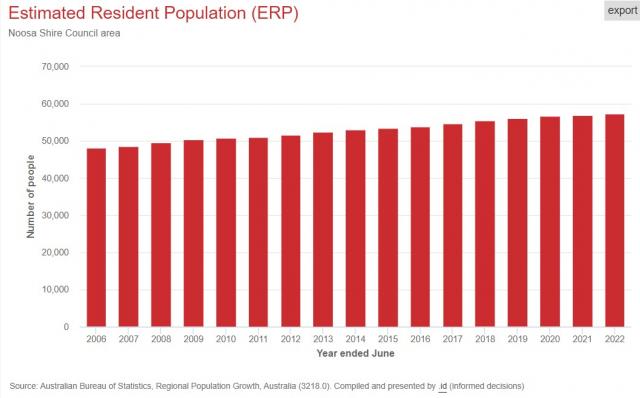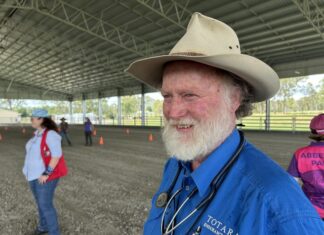The State Government released a final version of its upgraded South East Queensland Regional Plan – called ‘Shaping SEQ 2023’ – just before Christmas. As State policy trumps local government policy, it has implications for the Noosa planning scheme.
Comparing the 2017 and 2023 plans provides some insights into whether much has changed.
The forecasts in both the 2017 and the 2023 plans have 25 year time horizons – from 2017 to 2041 in the 2017 Plan and from 2021 to 2046 in the 2023 Plan.
A lot has happened in Australia and globally since 2017. Covid was a huge disruptor which led to many city people, especially Sydney and Melbourne folk, choosing to move to regional centres. Noosa had an influx of new residents as a result.
The 2017 SEQ Plan had forecast a population increase for Noosa Shire of 9,000 additional people, from 54,000 in 2017 to 63,000 in 2041.
But according to statistics in Economy ID (accessible on the Noosa Council website), by June 2022 Noosa Shire already had a population of 57,329, an increase of about 3,000 in just 5 years.
Now it’s 2023, so further population growth will have already occurred.
The SEQ Plan appears to have taken into account the actual population growth and growth trends, which according to the Australian Bureau of Statistics, has seen a steady increase (see graph).
The 2023 SEQ Plan forecasts a population increase of 18,900 people from 56,500 in the 2021 census to 75,700 in 2046.
This ever increasing population is no doubt disappointing for those who would like things to stay exactly as they are, or go back to how they used to be, but that hope is not the reality. This means that population growth must be planned for and managed wisely in order to ensure continued Noosa Shire liveability and natural beauty.
To cater for the projected population increase, the 2017 SEQ Plan required the 2020 Noosa Plan to provision for 6400 additional dwellings, an increase from 26,000 in 2017 to 32,400 in 2041.
Six years later, some of those dwellings have already been built.
The 2023 SEQ Plan requires an increase of 5,000 dwellings, from an estimated 28,300 in 2021 to 33,300 in 2046. That is not all that much more than what was in the 2017 SEQ Plan and provisioned for in the current Noosa Plan.
The 2023 plan now allows secondary dwellings (granny flats) to be included as part of the housing stock. As many already exist, this may contribute to the 5000 dwellings required. This follows on from the State Government having already changed its policy on secondary dwellings, allowing them to be rented out to any tenants, as opposed to previously being limited only to household members.
The 2017 SEQ Plan envisioned 75 per cent of new dwellings would be infill development. Similarly, the 2023 Plan has 81 per cent of new dwellings as low-rise attached properties, such as dual occupancies (duplexes), secondary dwellings (granny flats), row or terrace housing, townhouses, low-rise apartment/units, triplexes or quadruplexes. In addition, 5 per cent of new dwellings are to be four to eight storey medium rise apartments or mixed-use blocks. The latter is less than what was initially in the State’s discussion draft which was vehemently objected to by residents and Noosa Council.
In spite of the projected population increase, the requisite dwelling number for 2046 is only 900 more than that required previously by 2041. That seems to imply an expectation that more people will live together in each dwelling. The actual trend in Australia has been the opposite, with a greater percentage of single person households in the 2021 census.
So it could be that, in spite of the foreshadowed population increase, the actual number of dwellings in Noosa Shire will continue to constrain population growth, and inevitably put upward pressure on property prices.








